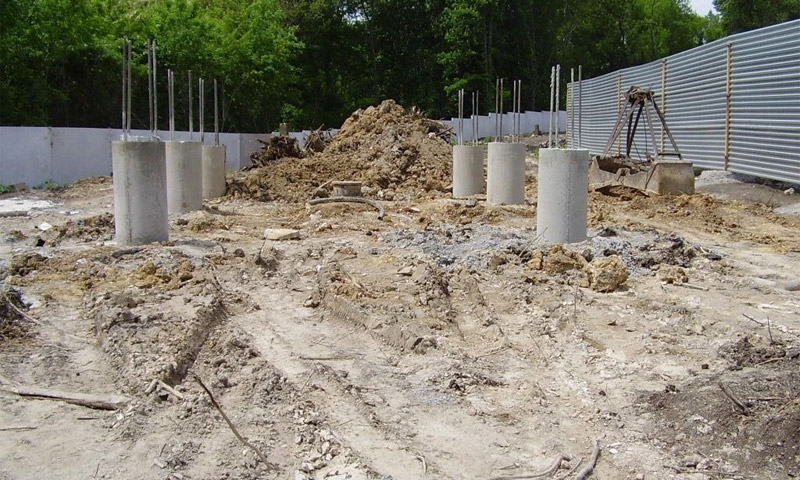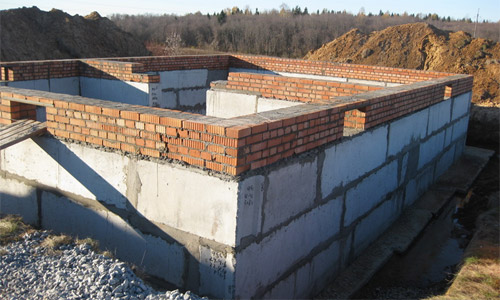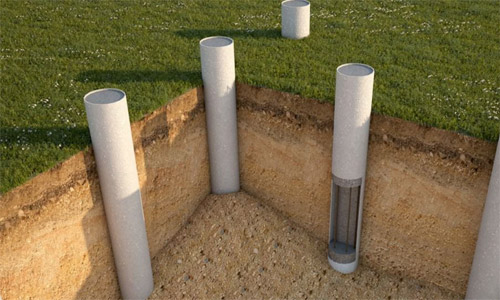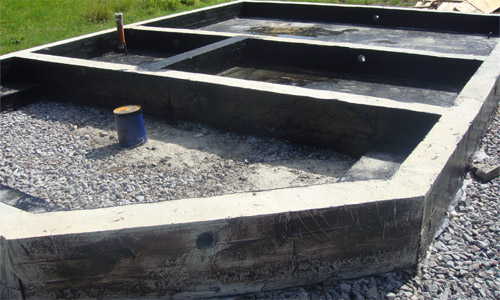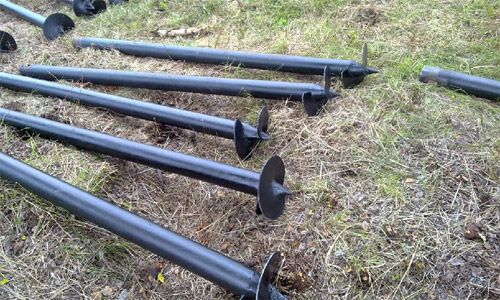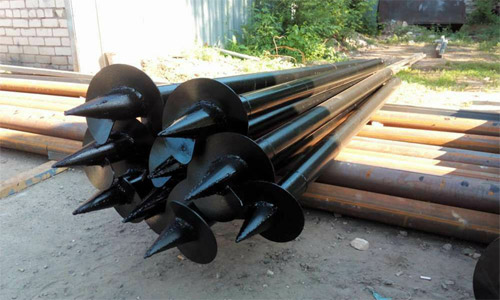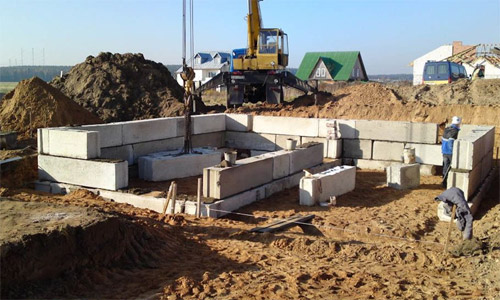A comment
The soil on my site was water-saturated from fine clay with a height difference of 2 m on the construction site. And given that the decision was made to build a slit brick house, the load on the base should be more than 400 tons. so that the screw piles fell off immediately. For a monolithic strip foundation, the wall thickness at the base should have been about 2 m of monolithic concrete, which is also not very cheap. It was decided to abandon the basement and level the area using rammed piles and a concrete supporting wall. I must say right away that it cost 5-3 times cheaper than a monolithic or strip foundation. 6 m stuffed piles with a cross section of 300x300 mm were used and hammered into the ground to the full depth. At the same time, the load on the pile was 12 tons, and the number of piles themselves was 47, which is almost right next to the weight of the house itself.A grillage of 400x400 mm with reinforcement in 3 rods quite qualitatively distributed the loads and no shrinkage, cracks, etc. after a year of operation, the house is not observed.
pros
Low cost in comparison with panel and monolithic strip foundations
Possibility of use on heaving soils
Minuses
The need to use special equipment (you need to negotiate with neighbors)
